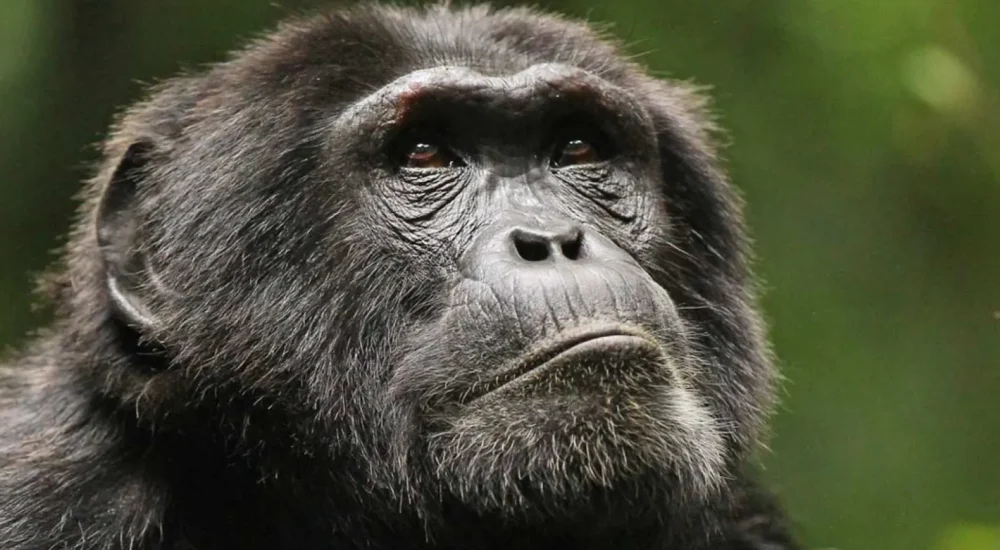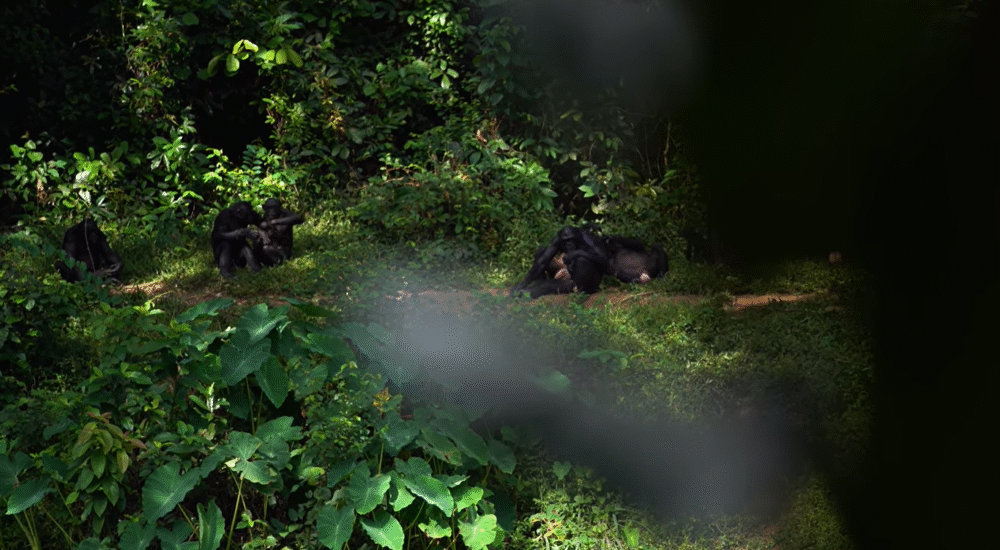Rwanda, known for its stunning landscapes and rich biodiversity, offers many unique travel destinations. One…
Gorillas in the Wild
Gorillas in the wild are called “gentle giants” because they are the biggest living animals and also very friendly. The places where they live are in central and eastern Africa. There are more than 98% of our genes in gorillas in the wild.
This makes them our third-closest relatives, after chimps and bonobos. And just like us, they have well-developed social systems and behave and feel in ways that are similar to ours. So much so that they can laugh and cry. In the wild, gorillas live in groups of five to ten, but sometimes there are thirty or forty of them. A man named Silverback is in charge of the family. In the wild, great apes live for about 35 to 50 years.
Gorillas don’t have many babies, so their species faces problems like population loss and other problems. The sad truth is that the number of gorillas has been going down for decades. Because of this, attempts to protect nature and the way protected areas are set up are becoming more and more important.
Here are some facts about the gorilla, also known as the Gorilla diehli and the Gorilla beringei.
What kinds of gorillas live in the wild
There are four different kinds of gorillas in the family:
Gorilla from Cross River
Gorilla in the forest
Great Western Lowland gorilla
Eastern The lowland gorilla
Gorilla from Cross River
Gorillas crossing a river in the wild
Cross river gorillas are the rarest and most endangered gorillas in the world. There are only about 300 of them left, which is why they are called “critically endangered.” Western Lowland gorillas and Cross River gorillas look a lot alike. The only things that make them different are the head and teeth. They are about 1.4 to 1.7 meters (4.7 to 5.5 feet) tall and weigh about 100 to 200 kilograms (220 to 440 pounds). The Eastern Lowland gorillas are bigger than this type, which is less than the Western Lowland gorillas. Besides that, their hair is shorter and lighter, and their arms are longer. Their faces are flat and expressive, like all ape types. They have a flat nose and dark eyes. Like the Western Lowland gorillas, the Cross River gorillas have light gray to black fur, chests that are golden, and a reddish crest on their heads.
mountain gorilla
The mountain gorilla is a “endangered” species (they were listed as “critically endangered” until 2018), and there are only about 1,200 of them left in the wild. To put it another way, adult male mountain gorillas weigh over 180 kg (400 lb) and stand 1.7 meters (5.5 feet) tall, while adult females weigh over 90 kg (200 lb) and stand 1.5 meters (4.9 feet) tall. This makes them the biggest and strongest living animals. Mountain gorillas have longer hair because they live in colder places. Also, they tend to be a bit bigger and have shorter arms. No matter how well they know how to climb trees, they spend most of their time on the ground with their large family group.
Gorillas of the Western Lowlands
With a population of about 350,000 animals, the Western Lowland gorilla is the most common species of gorilla in the wild. They are different from other species because they are a little smaller, have auburn chests, and shores that are brown-gray. This species is about 68 to 200 kg (150 to 440 lb) and stands 1.2 to 1.8 meters (4 to 6 feet) tall. Western Lowland gorillas also have wider heads, smaller ears, and brow wrinkles that stand out more than Cross River gorillas.
Lowland gorilla from the east
There are only about 6,000 Eastern Lowland gorillas left in the wild, making the species extremely endangered. This is the biggest subspecies of gorilla. It is also known as the Grauer’s gorilla. The short muzzle, big hands, and stocky form of the Eastern Lowland gorilla make it easy to spot. Women adults weigh about 100 kilos (220 pounds), and men adults weigh about 210 kilos (460 pounds).
The same species as mountain gorillas, they are eastern gorillas. But they are not only different in how they look, but also in how they act. One group of Eastern Lowland gorillas lives at a lower elevation and generally only has one silverback, which can mate with any female in the group.
Home ranges: Where do wild gorillas live?
The Cross River gorilla is a type of gorilla.
This species only lives in the lowland montane woods and rainforests of Nigeria and Cameroon. So, they live in an area of about 3,100 square miles (7,770 square kilometers) on the continent of Africa. A study says that cross-river gorillas live in 11 family groups spread out over 8 different places. They normally live on hilly land close to people.
A mountain gorilla is known as Gorilla beringei beringei.
Mountains are where mountain gorillas live, as their name suggests. They like to live at elevations between 2,400 and 3,600 meters (8, 000 to 12 000 feet). They live in two separate groups in east-central Africa. One is in the Virunga Volcanoes, which is split between Uganda, Rwanda, and the DR Congo, and the other is in Bwindi Impenetrable National Park in Uganda.
African gorilla or western lowland gorilla
Western lowland gorillas live in west and central Africa, in areas that cover more than 270 million square miles (790 million square kilometers). These areas include Cameroon, the Central African Republic (CAR), Angola, Equatorial Guinea, the Republic of Congo, and the Democratic Republic of the Congo (DRC). They live in dense tropical jungles most of the time, but you can also see them in swamps and swampy forests.
Lowland gorilla from the east (Gorilla beringei graueri)
The Eastern Lowland gorilla lives in the lowland tropical jungles of the DR Congo. Its home range has shrunk a lot in the last few decades and is now only about 4,600 square miles. The biggest group of safe Gauer’s gorillas lives in the National Park of Kahuzi-Biega (DRC). Maiko National Park is home to another big group of people.
What gorillas eat in the wild.
Goingrillas don’t eat meat very often, even though they have huge, strong bodies. They mostly eat bamboo shoots, roots, and fruits. But Western Lowland gorillas do eat ants and termites (including their young).
Mountain gorillas eat mostly plants (about 86%) because they are known to eat more than 140 different kinds of plants. Roots (7%), flowers (3%), and fruits (2%), are the main foods they eat. A male mountain gorilla can eat up to 34 kilograms of plants every day, while a female can only eat about 18 kilograms. Mountain gorillas don’t drink much water because they eat a lot of juicy plants.
Things that could kill gorillas in the wild
People are the biggest threat to gorillas because they kill them for their fur, spread diseases, and destroy their environment. Climate change is also a danger to gorillas that live in the wild.
People kill gorillas illegally in some places so they can eat them (bushmeat) or sell them for money. This is a problem that keeps happening all over Africa. People in cities eat bushmeat because it’s seen as a sign of wealth, so apes are killed to meet this demand. Parts of a gorilla’s body can be used as medicine or as magic charms.
Since gorillas and humans share the same DNA, our illnesses and infections can be passed on to them. Along these lines, Ebola has killed a lot of big apes since the 1990s.
It’s very bad for gorillas when they lose their homes. People use their home places for business reasons, like farming or illegal mining. The woods where they live have been cut down to make charcoal and wood. Also, warmer temperatures caused by climate change put gorillas in danger because they have to move to higher elevations, where woods are more crowded with people.
For what reason do gorillas hit their chest?
Gorillas hitting each other on the chest is a fantastic show. Most of the time, male gorillas stand up and cup their hands together. It has been found that they are using body language to attract or seduce their partners and send a warning signal to rivals to scare them away.
Different gorillas hit their bodies for different amounts of time and more than once. Even though there aren’t many reasons why gorillas might be hitting their chests, the following ones could be true:
To let their opponents know how strong they are. Other gorilla males are always being questioned about their power. So, because they are scared, they send a message to their opponents through the sound of their chest beat that they should think twice about challenging them and not cause a fuss.
Maybe to see how good their opponents are at fighting.
It shows that the gorilla is angry.
The chest beat may sometimes be a way for gorillas to avoid fighting.
The way they hit their chests also shows how big they are. Males that are bigger have lower peak frequencies than males that are smaller. When bigger men hit their chests, the sounds they make are lowered in frequency by bigger air sacs near their voice boxes.
Hitting the chest is another way they alert their coworkers to who they are.
They also hit their mates on the chests to get their attention. It is thought that female gorillas use the sound or knowledge to find a mate.
How apes hit their chests
There aren’t many real gorillas that hit their chests with their hands. Instead, they cup their hands together to make their sounds louder. Along with this, the gorillas make sure they are standing so that the sounds can be heard from far away.
About once every 10 hours, a male gorilla hits its chest 1.6 times on average. Young male gorillas and weak male gorillas who work for them also hit their chests. The young gorillas do this when they are playing.
How far away the chest beat sound is
They can be more than 0.62 miles (1 kilometer) away from where the chest beat sound is coming from.
Hearing the difference between how big and small gorillas sound
The bigger gorillas make sounds with lower frequencies than the smaller ones. This is because the air sacs near their voice boxes are bigger in bigger gorillas. When gorillas beat their chests, it’s not just for show; it’s a sign of power and authority.
When weak male gorillas hear the chest sound of a bigger gorilla, they stay away. Similarly, when bigger gorillas hear the chest sound of a smaller male gorilla, they don’t pay attention because they think the smaller male is too weak to react.
Strength of gorillas vs. humans
It is clear that an ape is stronger than a person. People say that a fully grown silverback gorilla is stronger than twenty adults put together. The strongest person on record, an Icelandic guy named Hafthor Bjornsson, was able to lift 500 kg. A silverback gorilla can lift something heavy up to 1,810 kg. It has been found that gorillas can lift up to 27 times their own body weight.
Reports say that gorillas break iron bars to get out of cages. Gorilla bites have a force of about 1300 pounds per square inch, which is twice as much as a lion’s. Because of this, you should never bother a gorilla.
Where you can see gorillas stomping their feet.
In Rwanda’s Volcanoes National Park, you can see gorillas pounding their chests.
The young gorillas in Bwindi Impenetrable National Park and Dr. Congo are also known to beat their chests.
How strong gorillas are
It is thought that a gorilla’s strength is between 4x and 10x. It’s really tough when you think about how strong silverback gorillas are. It is very easy for an ape to cut down a banana tree. They can bend the iron bars in their chains to get out. In fact, at 1300psi, their bite is twice as strong as a lion’s. The back teeth of gorillas are very long and have a lot of muscle. When they hit chests, it sends signs to other players early enough that they don’t need to fight.
How big their chests are
The male gorillas are very big; they are between 1.25 and 1.8 meters tall. Their weight ranges from 100 to 270 kg. Depending on the species and sex, their arm can grow up to 2.6 meters long. Their chest is 1.98 meters (6 feet 6 inches) wide. It is known that female gorillas are between 68 and 113 kg heavy, 1.25 to 1.5 m tall, and have arm spans up to 2.5 m.
How do gorillas use the information they get from hitting each other in the chest?
It is possible for male gorillas to tell how strong and skilled a chest beater is by hearing it from another male gorilla. They can start the violent behavior of the chest beater, make it worse, or stop it.
Women gorillas can tell if a chest beater is a good candidate for mating by their sound.
Why does the sound make the male gorillas feel something?
Men and women both beat their chests, but men’s sounds are louder because they have air sacs in their throats that make the sound travel farther.
What can you learn from the gorilla’s sound?
They can solve problems because hitting their chests can scare away people who are trying to cause trouble in the camp.
Because they can talk to each other, gorillas can live together in peace.
Gorillas can also find a mate.
It is one of the safest places to go gorilla trekking, so you can take your ultimate gorilla trekking trip there. Check out our gorilla tours in Rwanda.


